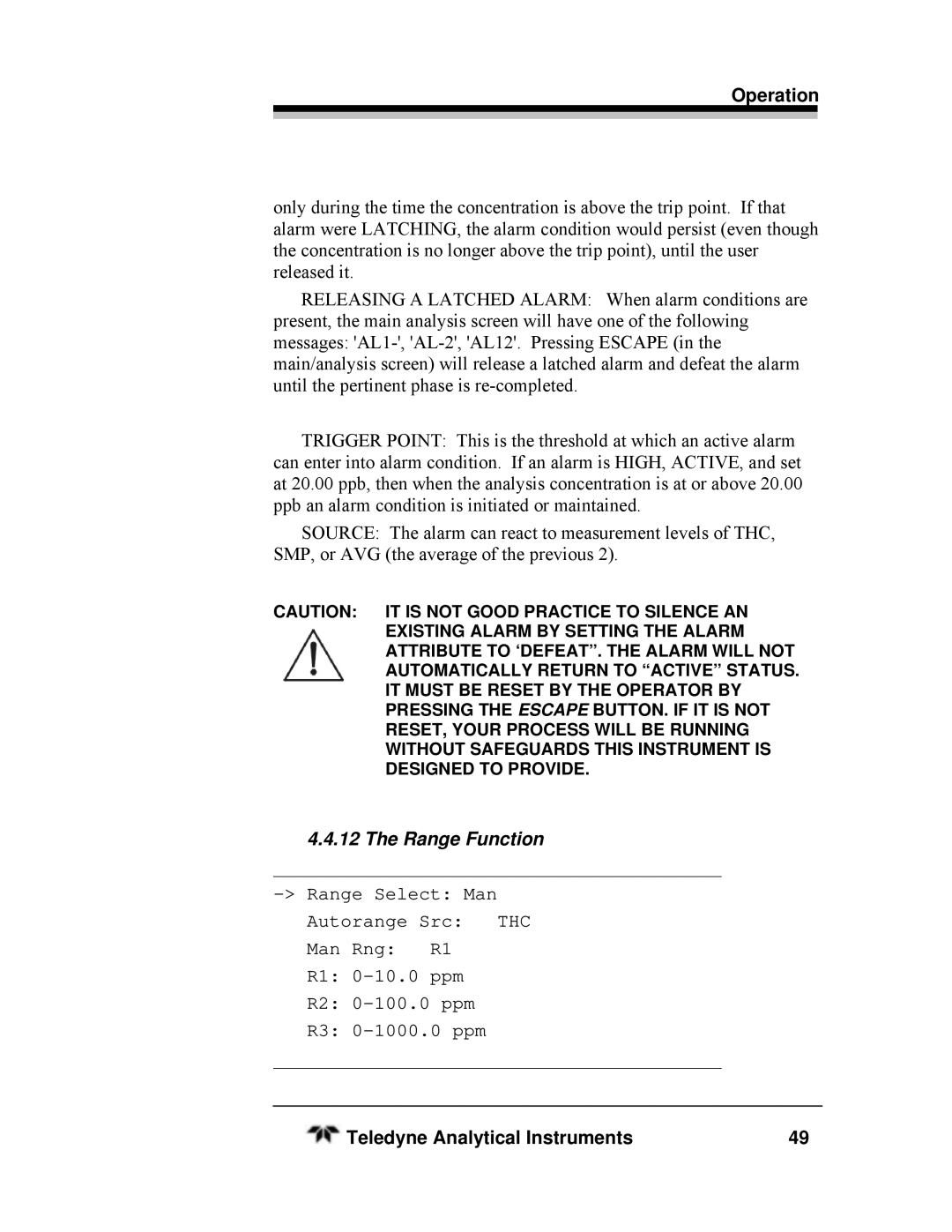
Operation
only during the time the concentration is above the trip point. If that alarm were LATCHING, the alarm condition would persist (even though the concentration is no longer above the trip point), until the user released it.
RELEASING A LATCHED ALARM: When alarm conditions are present, the main analysis screen will have one of the following messages:
TRIGGER POINT: This is the threshold at which an active alarm can enter into alarm condition. If an alarm is HIGH, ACTIVE, and set at 20.00 ppb, then when the analysis concentration is at or above 20.00 ppb an alarm condition is initiated or maintained.
SOURCE: The alarm can react to measurement levels of THC, SMP, or AVG (the average of the previous 2).
CAUTION: IT IS NOT GOOD PRACTICE TO SILENCE AN EXISTING ALARM BY SETTING THE ALARM ATTRIBUTE TO ‘DEFEAT”. THE ALARM WILL NOT AUTOMATICALLY RETURN TO “ACTIVE” STATUS. IT MUST BE RESET BY THE OPERATOR BY PRESSING THE ESCAPE BUTTON. IF IT IS NOT RESET, YOUR PROCESS WILL BE RUNNING WITHOUT SAFEGUARDS THIS INSTRUMENT IS DESIGNED TO PROVIDE.
4.4.12The Range Function
________________________________________________
R1:
R2:
R3:
________________________________________________
Teledyne Analytical Instruments | 49 |
